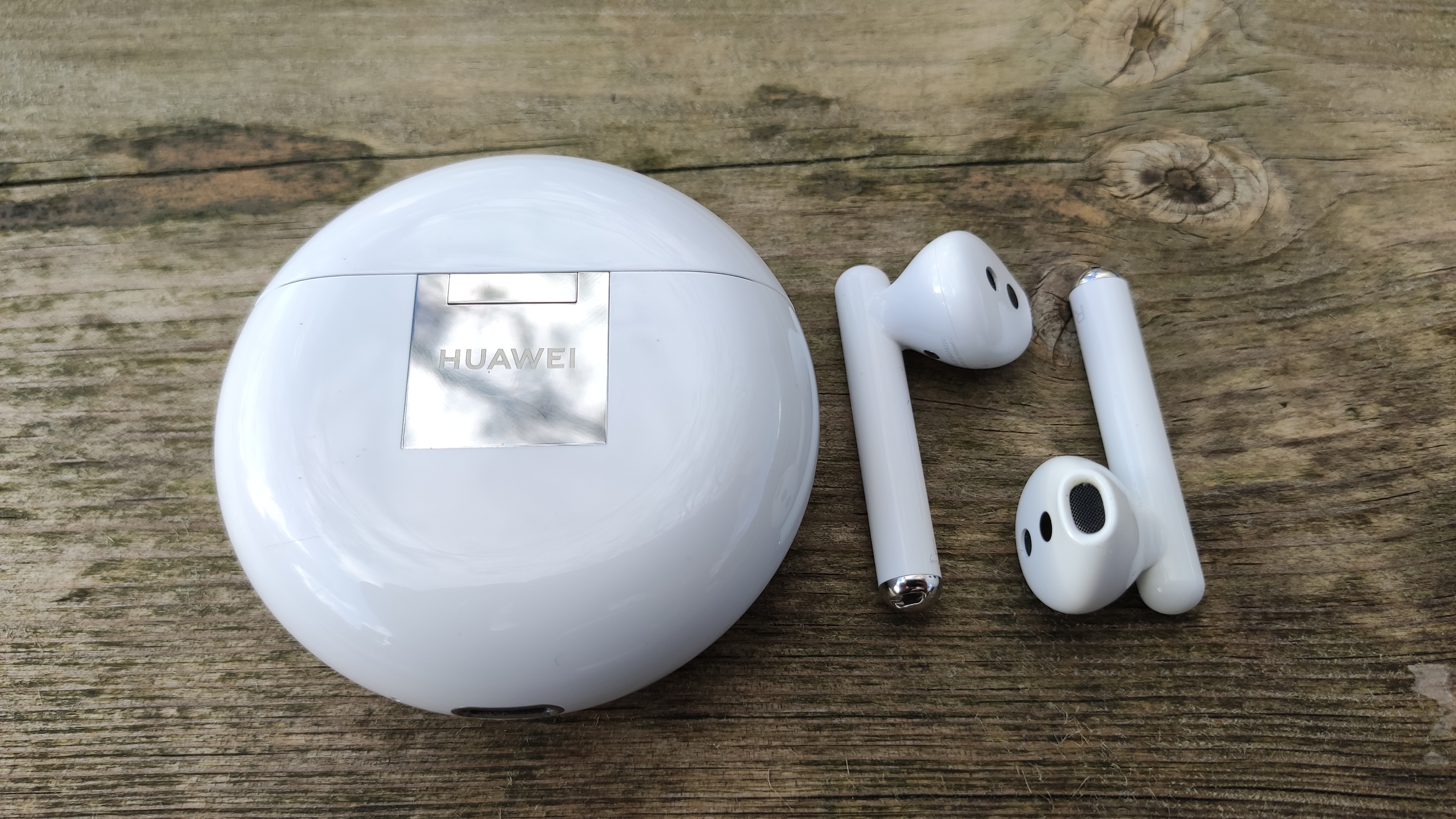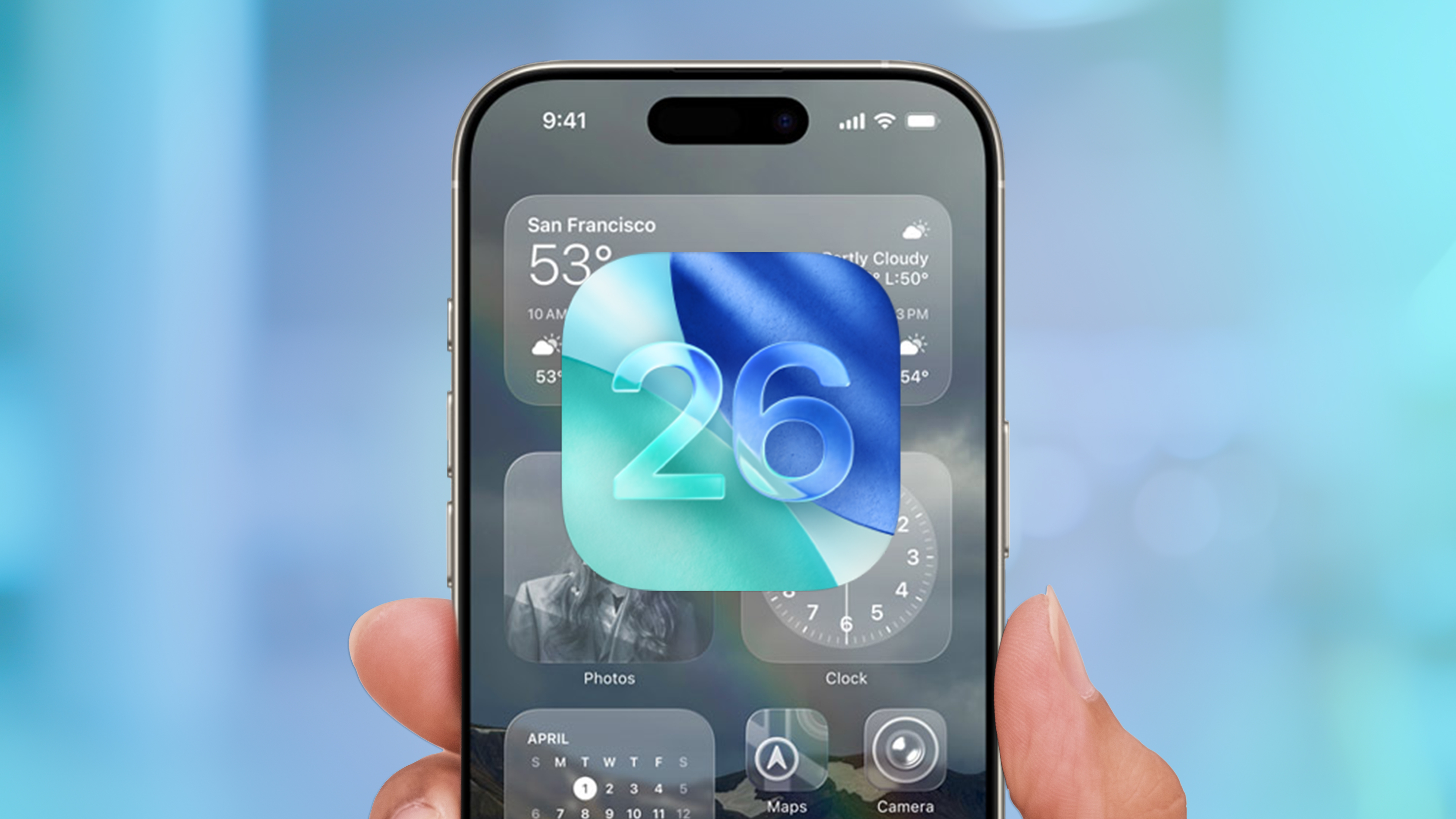Tom's Guide Verdict
Huawei has jammed some fun features into a familiar-looking design, but the FreeBuds 3 come with a few problems that could easily turn you off to them.
Pros
- +
Advanced features for the price
- +
Good customization options
- +
Attractive and solid design
- +
Great sound quality
Cons
- -
Heavily reliant on its companion app
- -
Noise cancelling is weak
- -
No U.S. availability
Why you can trust Tom's Guide
It's hard to deny that Apple's AirPods are icons among true wireless earbuds. The distinctive and often-imitated white stems protrude from the ears of listeners around the world, although these buds are not without flaws. For example, they have only a few in-line controls, and by default they have only a wired charging case, something Apple has just fixed with the AirPods Pro, albeit in return for significantly more money.
Huawei has also just introduced its latest true wireless upgrade in the form of the FreeBuds 3. These bring together many of your favorite headphone features, plus a few of their own strange innovations, in an unusual but good-looking and well-priced open-fit package. They sit between Apple's two sets of true wireless earbuds in terms of spec, but below both in price, and are tailored toward Android users in the way that AirPods are to iOS users.
It's a pity that these work their best only with specific Huawei phones, require an Android-only app to unlock their true potential and won't be on sale in the U.S., because they prove to be a strong Android-focussed competitor to the AirPod range.
FreeBuds 3 price and availability
The FreeBuds 3 are on sale in the U.K. from Nov. 14 at Amazon UK, Carphone Warehouse, O2, John Lewis and Argos in the U.K. and will cost £169.99 (roughly $220 when directly converted). That's £30 cheaper (but $20 more) than the equivalent Apple product, the AirPods 2 with wireless charging case, and £80/$29 cheaper than the newly revealed AirPod Pros, which share other features with the FreeBuds, such as noise cancellation and more in-line controls. When you buy the FreeBuds, you can also claim a free Huawei 15W wireless charger until Dec. 31 2019.
Huawei is still not selling its devices in the U.S., meaning the only way U.S. readers can buy the FreeBuds will be via auction sites or international shipping of the buds themselves.
Design: Hewn from a familiar source
The FreeBuds are a handsome pair of earbuds, coming in either a glossy Ceramic White (as my review units did) or Carbon Black. Yes, they do look similar to AirPods, but you can still tell the two products apart fairly easily. The FreeBuds' casing is angular, eschewing Apple-like curves in favor of trimming away all excess material, which fits with Huawei's usual sharp-edged design language. Other than the plastic, there's a shiny metal tip at the bottom of each stem that leads to the microphones and black mesh covering the speaker hole on the inner side, plus some black semitransparent plastic where the on-ear-detection sensor lives. It's a more conspicuous presentation than what you see on the standard AirPods or the Pros, and while none of it is revolutionary design work, it does look good.
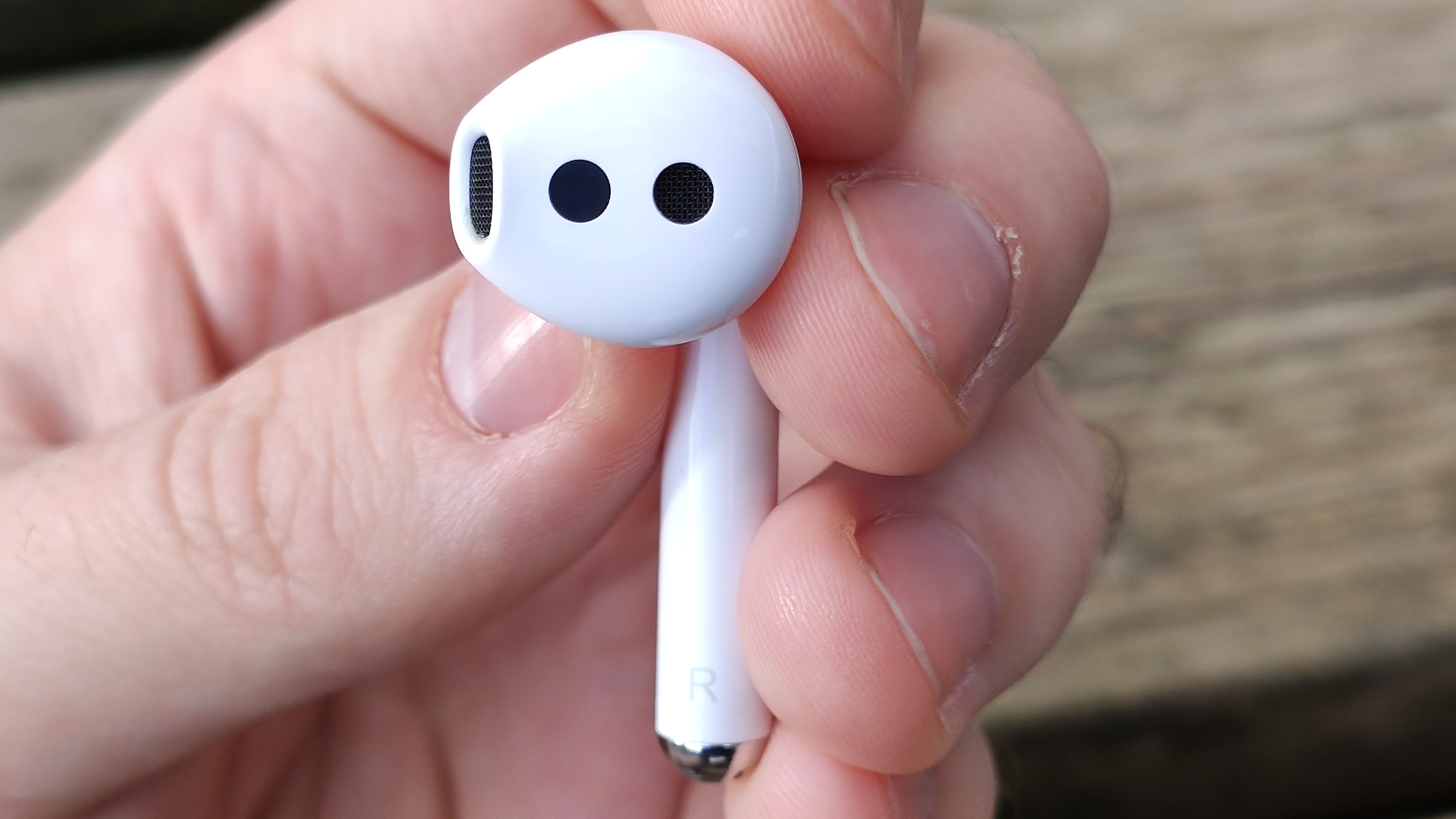
Hidden within the frame of each bud, there is a 14mm dynamic driver and bass tube, a voice and a bone-conducting microphone, and the brains of the operation, Huawei's Kirin A1 chip. Similar to Apple's H1 chip, Huawei's new processor, which is designed for wearables, aims to provide your ears with stable, responsive and accurate sound.
Get instant access to breaking news, the hottest reviews, great deals and helpful tips.
The included wireless charging case (a feature that will cost you extra with 1st- and 2nd-generation AirPods) is another simple plastic design in the matching colors of the earbuds. There's a shiny, silver Huawei logo on the back, which helps disguise the metal hinge mechanism. However, it does kind of look like a manufacturing mistake, since it makes far more sense to have your logo on the front of the case.

The case's circular shape means it's quite wide and tall (60.9mm diameter x 21.8mm depth, or 2.4-inch diameter x 0.85-inch depth). It's a lot taller and a hair thicker than the AirPods Pro case — 45.2 x 60.6 x 21.7mm (1.78 x 2.39 x 0.85 inches) — and also quite a bit wider and taller than the wireless AirPods case — 53.5 x 44.3 x 21.3mm (2.11 x 1.74 x 0.84 inches). I don't think it's a significant difference, though, since the FreeBuds' case will still fit comfortably in a jeans pocket, but the noticeably chunkier profile at least made me feel like the buds within were safer during a sudden drop than the AirPods would be.
The FreeBuds 3 are IPX4 sweat- and water-resistant, just like the AirPods Pro, making FreeBuds safe for workouts and rainy days, but don't try taking them for a swim. Jabra's Elite 65t and Elite Active 65t have IP55 and IP56 ratings, respectively, so go for these if you want something more robust.
FreeBuds 3 fit: Open but secure
Unfortunately for me when using the FreeBuds 3, I don't like open-fit earbuds as a rule. My ears have always preferred gel-tipped buds that snugly fit within your ear rather than the kind that sit at the entrance of your ear and are held in by your tragus, as the FreeBuds are.
When I first tried the AirPods (2nd gen), I was delighted to find that they were extremely comfortable from the moment I placed them in my ears. However, the FreeBuds' slightly larger size meant it took a little adjustment to find the most comfortable position for them, and even then, I was still very aware of their presence as I wore them. I got used to them after a short while, and they never felt insecure in my ears, even when I wore them while running. In the end, I was able to ignore them as well as I could the AirBuds, so I imagine if you're less picky about your earbuds' fit style, you'll get along well with the FreeBuds.
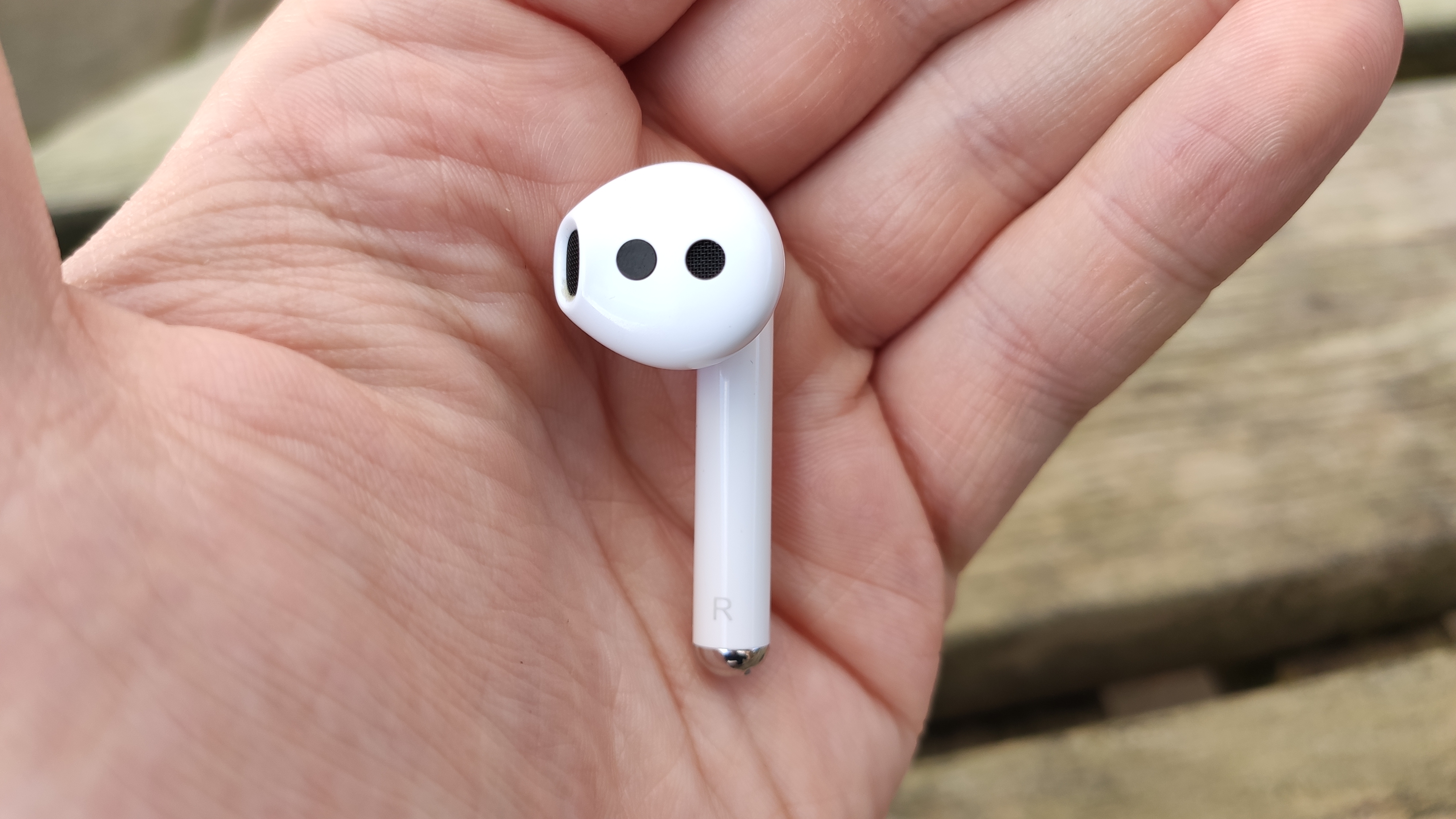
The Huawei buds (measuring 1.6 x 0.8 x 0.7 inches or 41.5 x 20.4 x 17.8mm) are almost identical in size to the AirPods (1.6 x 0.7 x 0.7 inches or 40.5 x 18.0 x 16.5mm) but are a tiny bit larger in every dimension. As for weight, again, the FreeBuds are a little larger, each bud weighing 4.5 grams (0.16 ounces) against the AirPods' 4 grams (0.14 ounces) and with the case weighing 48 grams (1.8 ounces) against Apple's 40 grams (1.4 ounces). These differences are easy to spot on a spec sheet, but in real life, you won't notice the difference when you're using the Huawei buds.
FreeBuds 3 setup
Pairing the FreeBuds to either an iOS or Android device works in the usual way. With the earbuds in the case, you hold down the small button on the exterior of the case with the lid open, and eventually you'll see the FreeBuds 3 pop up in your Bluetooth menu.
To get a fuller FreeBuds experience, you need the AI Life app, available only on Android (sorry, iPhone users). This has, until now, been used as a management app for Huawei's routers, but it now supports the FreeBuds and the upcoming Huawei Eyewear smart glasses with extra features and tools. With this app, the setup of the FreeBuds is almost as simple as getting AirPods working on an Apple device. Simply turn on the case with the side button and open it up. Within seconds, you'll get a pop-up that you can use to quickly pair the buds, bypassing the Bluetooth menu entirely.
FreeBuds features
But the true potential of these buds is reserved for existing Huawei users. Exclusive to EMUI 10 devices is the FreeBuds' super-low-latency feature, achieved via an "isochronous dual channel" connection. It basically means that both buds receive only their own left/right signal, rather than the usual solutions of both buds receiving both signals or one receiving both and then sending one on to the other. Huawei's method is meant to save power and make for a less laggy experience.
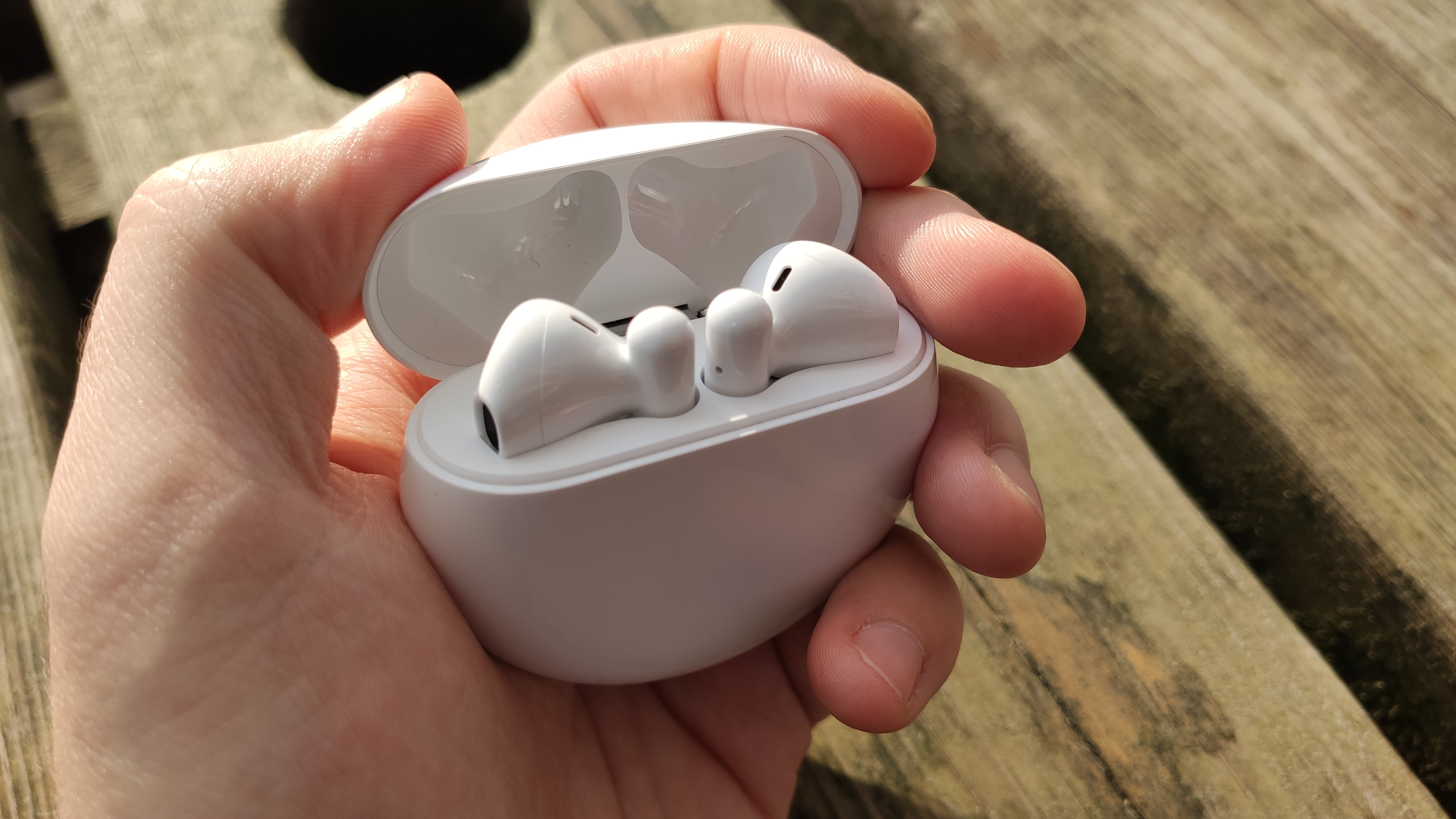
You can get EMUI 10, Huawei's take on Android 10, as standard on the Mate 30 series and on P30-, Mate 20- and P20-series devices in the coming months. Given the difficulties surrounding buying Huawei's devices, particularly in the U.S., this means you can't make the most of the FreeBuds without significant extra effort.
Another Huawei-device exclusive is easy swapping between devices. If you sign in to your phone with Huawei ID and do the same with another Huawei device, like a Watch GT 2, your FreeBuds will pair with the watch when you leave home without the phone and will reconnect with your phone once you're back. You can manually manage multiple device connections through AI Life easily, though, thanks to the Reconnect button, which bypasses the Bluetooth menu if you've paired the buds previously.
Other than easy pairing, AI Life also offers you handy information. That includes the individual battery life of each bud and the case, the ability to customize what the double-tap shortcuts on the buds do, and the ability to change the noise-cancelling settings.
Turning on the FreeBuds and listening to something takes barely any time. Huawei's claim that the company's earbuds can connect to one of its own phones in 2.5 seconds checks out, and it was only a few tenths of a second slower when I tried with the Xiaomi Mi 9T Pro phone I use daily. My MacBook Pro connected just as quickly, so you don't have to worry about cross-brand compatibility, even on a different genre of device. Essentially, it means the FreeBuds offer near-instantaneous pairing with whatever you want to connect them to.
FreeBuds 3 controls
The only control method on the FreeBuds 3 themselves is to double tap either the left or right earbud. In AI Life, you can choose what this can do on either bud, the options being pausing or skipping tracks, waking a voice assistant, or turning the noise cancelling on or off. While it's still limited, at least you have some flexibility in what in-line controls you want to have access to without reaching for your device.
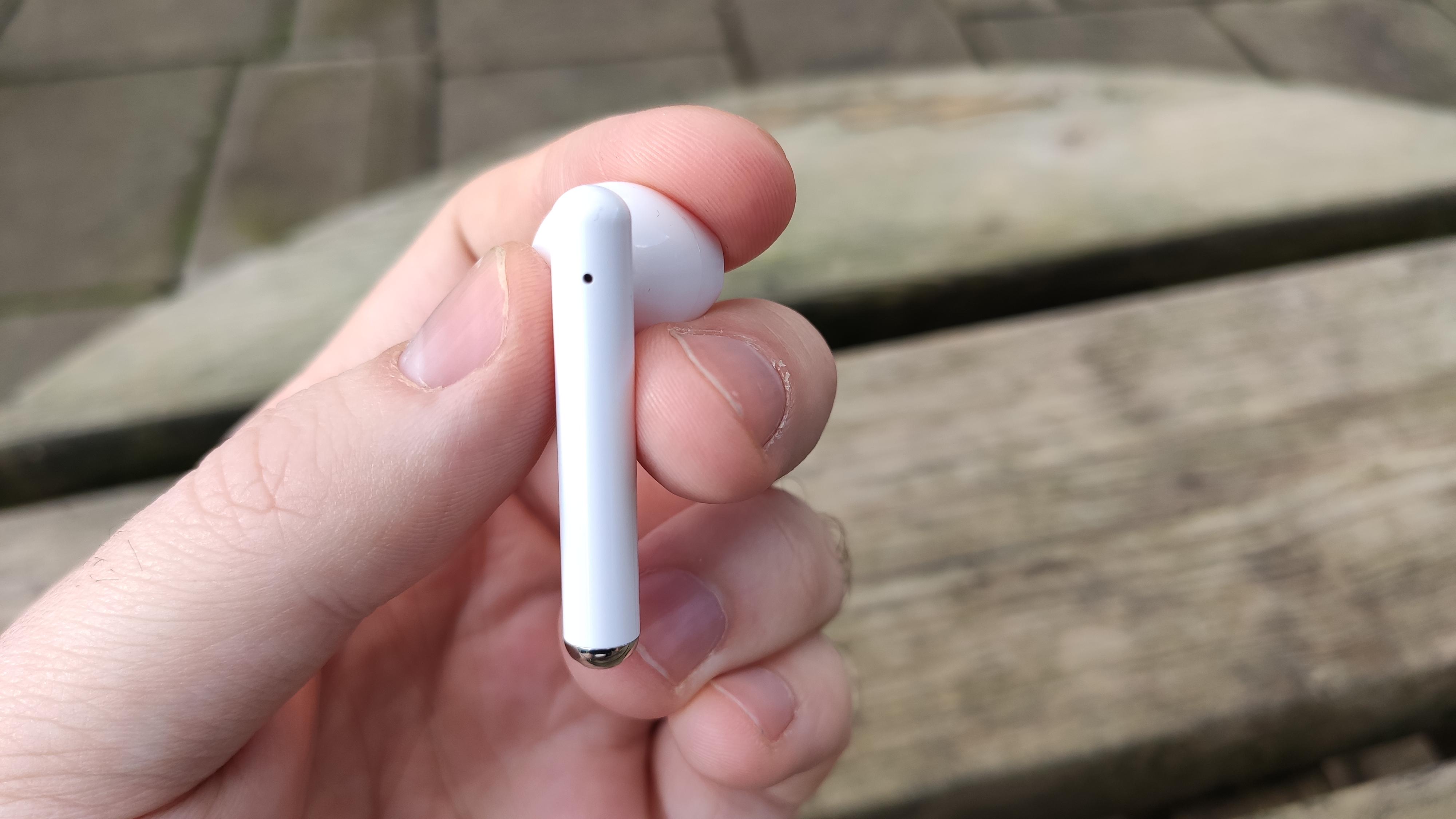
It's a little fiddly to get the right kind of double tap at first, but this is something you master after a few tries. It's not as easy as using dedicated buttons, as larger rivals do, but this option keeps the design clean while giving you your choice of two controls rather than a fixed scheme like what Apple provides. It's a compromise that I think works quite well once you are used to the system.
FreeBuds 3 noise cancellation
Having noise cancelling in open-fit earbuds is a world first, and Huawei's done its utmost to fit together two design choices that common sense would call irreconcilable.
The effect isn't the sound-proof cocoon that you get with full sized headphones or larger earbuds; about the best you can manage here is cutting out distant road noise or a conversation across a room. This noise cancellation creates just enough insulation from the outside world that you can still hear the quieter parts of songs that may otherwise have been lost. That's not good enough for deep concentration sessions, but it is good for enjoying your music at near-full quality even in a noisy environment.
Interestingly, the setting itself is adjustable, via a dial in the AI Life app that changes the sensitivity of the external microphones and quality of the "anti-noise" the buds produce, so you can adapt to whatever environment you are in. I found that adjusting this dial each time I moved to a new location was worth doing, because it made a noticeable difference. But you still won't manage to properly cut yourself off from the world, no matter how hard you try.
As a test, I compared the FreeBuds against the Jabra Elite 65t earbuds, which claim to have "wind noise protection" and "ambient noise reduction" rather than noise cancellation but use tighter-fitting ear gels rather than an open-fit design. I took them both on a 5-minute walk along the street outside TG's London office while listening to synthwave artist Carpenter Brut's "Le Perv." The bottom line was that while I liked the sound of the FreeBuds more than that of the Elite 65t buds, due to the FreeBuds' larger sound, the noise-cancelling effect on the Jabras was more pronounced. Although the synth drums and buzzing bass were weaker on the Elite 65t buds, they managed to cut out wind noise and the engines of passing cars effectively. Meanwhile, the FreeBuds, even though I did my best to adjust the noise-cancelling settings to the environment, still let in people's conversations, as well as all the other surrounding sounds.
An important note for Apple fans: If you use the FreeBuds 3 with an iPhone, then you won't have access to any of this, since you can't download AI Life on an Apple phone. You may want to look elsewhere if you're keen on noise cancelling.
FreeBuds 3 audio
You get great sound out of the FreeBuds. Speech comes out very well, as do treble and middle tones, while the bass is weak, typical of this size of earbud. The tips of the buds, which Huawei claims are inspired by the shape of a dolphin's vocal cavity, channel the sound very directly into your ears, so there's next to zero sound leakage, even when you've got the volume way up.
When I listened to a podcast (BBC Sounds’ “Kermode and Mayo's Film Review”) on the FreeBuds, the voices were clear even at low levels and noticeably brighter than on the more-neutral AirPods 2nd gen. Those required a slightly higher volume setting to get to the level I wanted.
As for music, which I first tested with a "Best of Tame Impala" playlist, the FreeBuds dealt well with Kevin Parker's falsetto vocals, but you do miss out on some of the bass, as is common with smaller earbuds. The AirPods were far more effective on the drumbeats, with the rest of the mix settling in fairly evenly. But without the tighter seal or noise cancelling, the band's songs were vulnerable to being drowned out by exterior noise.
When I swapped out the indie rock for some orchestral ambience in the form of the soundtrack for The Dark Crystal: Age of Resistance, it was a similar story, only played out over a larger group of instruments. The violins, woodwind and brass did well on both sets of earbuds, but the thundering timpanis and droning cellos and double basses came out better on the AirPods, except when there was significant background noise that the FreeBuds could cancel out.
Rounding out the test with some emotional showstoppers from Anaïs Mitchell's musical "Hadestown," the AirPods did excellently with the close-harmony singing and quieter moments in the songs. But when the full band kicks in, with the whole company joining, the FreeBuds let you appreciate the melody on the guitars and violins better, even if it comes at the expense of the lower-sounding instruments and even some of the singers.
If you're picking a favorite on just this part of the test and nothing else, then you're better off with the AirPods for all-around quality. The FreeBuds are better if you want to concentrate on smaller parts of the mix, be that voice or lead instruments, and if the noise cancelling happens to be useful in the time and place you're listening.
FreeBuds 3 battery life and Bluetooth
Huawei promises 4 hours of battery life in the buds themselves and 20 in total with the charging case. That's 1 hour and 4 hours less than the respective stats for the AirPods, (both the standard gen 2s and the Pros), but it was still enough to last through a couple of days' usage while I was at work without having to think about charging.
Where Huawei claims an advantage is charging speed. The FreeBuds's case achieves a 70% charge when you plug the case in for 30 minutes or 30% when wirelessly charged for the same period, which are both meant to be twice as fast as what the AirPods wireless charging case can manage, wired or wirelessly. However, Apple does not make any official equivalent claims about the AirPods' case's charging speeds. You can wirelessly charge the FreeBuds with a charging mat or off the back of a reverse wireless-charging phone, such as Huawei's own P30 Pro or the Mate 30 Pro. I tested the latter and found that it could do exactly what Huawei promised.
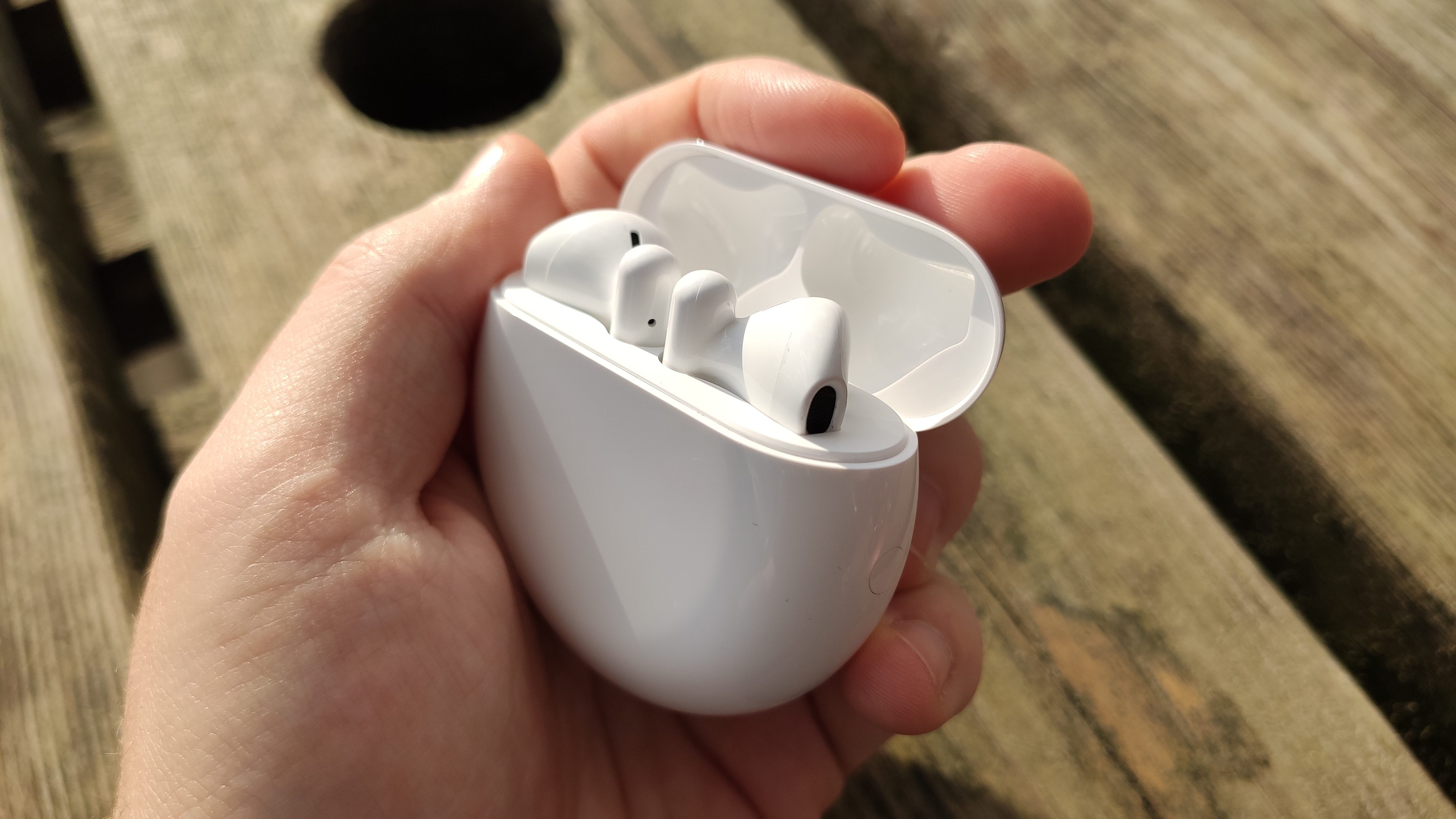
You'll want to take a USB-C cable with you if you're going to be away from base for anything longer than two days. But you won't need to keep one in your bag for everyday use, especially if you've got some wireless-charging-capable gadgets to deliver a rapid top-up when you need it.
The connection to your phone, even if it's a non-Huawei device like the one I used for the majority of my testing, is near-impeccably solid, connecting quickly and staying connected. Whenever I wear my Elite 65t buds out to my local supermarket, the security barriers cause the buds to drop audio for a few seconds after I've walked through the entrance, presumably due to some radio interference. The FreeBuds 3 have no such issue, thanks to their secure Bluetooth 5.1 connection.
The only issue I noticed is that the FreeBuds sometimes desynchronize when you start playing something, giving you a second or so of weird echoing between your ears until the issue sorts itself out. This is a minor problem that could theoretically be easily patched out, but it's still something to be aware of since it happened regularly.
Bottom line
The stylish and feature-rich FreeBuds 3 are a fine pair of earbuds, but like all Huawei phone products, they won't be going on sale in the U.S. That makes a wholehearted recommendation impossible.
The only reason you'd buy these as an Apple user is if you want earbuds that look like AirPods but that cost a little less. This is a bad idea, though, because Huawei locks features in an Android-exclusive app. The 2nd-generation AirPods may cost a little more, but they are still really good, and the AirPods Pro are a fantastic choice if your budget can stretch that far.
If you are using an Android phone, then the £170 price in exchange for great sound, design and variety of supporting features is quite a bargain. True, it'll work perfectly only if you've got a recent Huawei device, but even with a different manufacturer's phone with AI Life installed, you'll be very satisfied with the all-round effectiveness of the FreeBuds 3.

Richard is based in London, covering news, reviews and how-tos for phones, tablets, gaming, and whatever else people need advice on. Following on from his MA in Magazine Journalism at the University of Sheffield, he's also written for WIRED U.K., The Register and Creative Bloq. When not at work, he's likely thinking about how to brew the perfect cup of specialty coffee.
